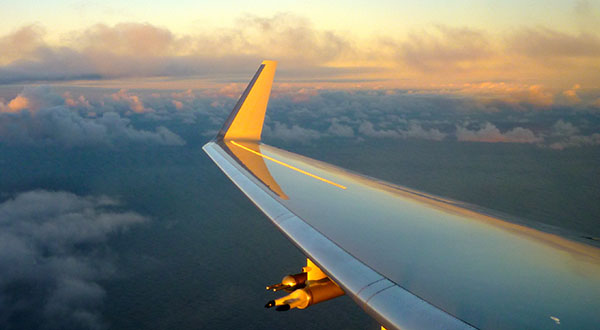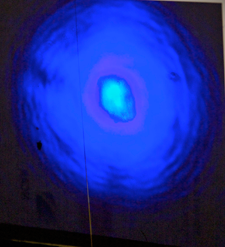Cloud droplets in 3D
NCAR instrument gives new view of how clouds dissipate
Sep 30, 2015 - by Staff
Sep 30, 2015 - by Staff
October 1, 2015 | It seems like a simple question: When a wet cloud mixes with dry air, do the cloud's droplets evaporate completely one by one? Or do all the droplets shrink simultaneously, each giving up a tiny bit of its water at the same time?
The two theories of what might happen to water droplets when clouds begin to dissipate were proposed more than 30 years ago. But evidence as to which one might be correct—information that could improve how clouds are represented in weather and climate models—has been hard to come by. The instruments traditionally used to measure droplets in clouds cannot view individual droplets in three dimensions while simultaneously recording the sizes of each droplet.

The Holographic Detector for Clouds (HOLODEC) mounted on the wing of a research aircraft. (Photo by Scott Spuler, ©UCAR. This image is freely available for media & nonprofit use.)
That just changed. An experimental instrument built at the National Center for Atmospheric Research (NCAR) in collaboration with Michigan Technological University has given scientists a detailed look inside clouds using holography, the technique used to make holograms. What they learned, detailed in a new study published in the journal Science, is that droplets tend to either evaporate entirely or remain untouched. (Read more about the new study.)
The Holographic Detector for Clouds (HOLODEC) uses laser light to take a 3D "image" of the droplets inside the cloud.
"It's a combination of camera technology and computing technology," said NCAR scientist Jeff Stith, a cloud physicist who heads NCAR's Research Aviation Facility. "The instrument basically takes a hologram of a thousand or so particles and the computer reconstructs each droplet. It's a huge computational effort that wouldn’t have been possible years ago."

Profile of the ultraviolet laser beam used to generate the holograms. (Image by Scott Spuler, ©UCAR. This image is freely available for media & nonprofit use.)
Stith is a co-author of the new study in Science along with NCAR research engineer Scott Spuler, who designed the optics for HOLODEC. Spuler worked on the instrument with study co-author Jacob Fugal when Fugal was a postdoctoral fellow through NCAR's Advanced Study Program. Fugal, who earned his doctoral degree at Michigan Tech, is now at the Johannes Gutenberg University of Mainz and the Max Planck Institute for Chemistry.
Stith and Spuler worked with researchers from Michigan Tech to install HOLODEC on the wing of the National Science Foundation/NCAR C-130 and to fly the airborne laboratory into an appropriate cloud.
Now that the results of the flight are published, Stith expects to hear from more scientists who believe HOLODEC could be useful in their own work.
"The instrument is still somewhat experimental," he said. "But we anticipate it will be highly requested in the future."
Matthew J. Beals, Jacob P. Fugal, Raymond A. Shaw, Jiang Lu, Scott M. Spuler, Jeffrey L. Stith. Holographic measurements of inhomogeneous cloud mixing at the centimeter scale, Science, doi: 10.1126/science.aab0751
Writer/Contact
Laura Snider
Funders
National Science Foundation
U.S. Department of Energy